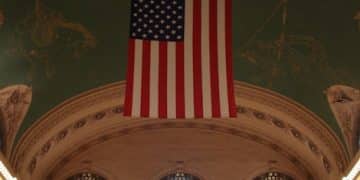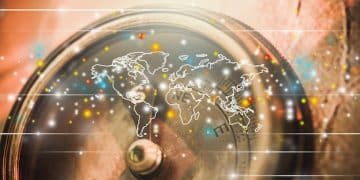Fed Rate Hike: Impact on US Consumers in 2025
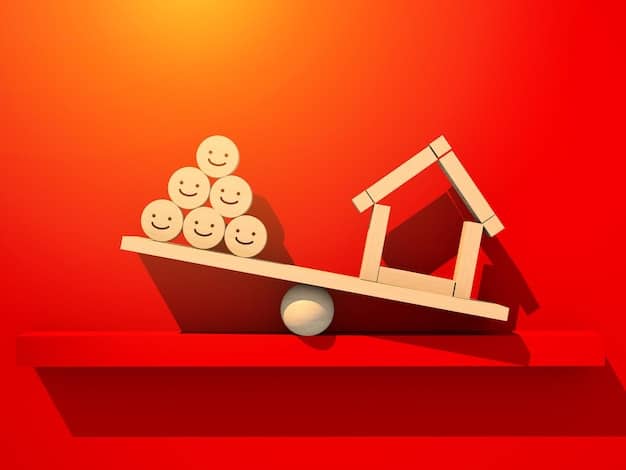
Breaking: The Federal Reserve has announced a 0.25% interest rate hike, signaling continued efforts to combat inflation; this increase will affect various aspects of consumer finance, including borrowing costs, savings rates, and investment returns for US consumers in 2025.
The Federal Reserve’s recent announcement of a 0.25% interest rate hike has sent ripples through the financial world. For US consumers, understanding the implications of this decision is crucial for navigating the economic landscape in 2025. Let’s explore what this means for your wallet.
Understanding the Fed’s Interest Rate Decision
The Federal Reserve, often called the Fed, plays a vital role in managing the US economy. One of their primary tools is adjusting the federal funds rate, which influences the interest rates banks charge each other for overnight lending. Changes to this rate subsequently affect interest rates across the board, impacting everything from mortgages to credit cards.
What is the Federal Funds Rate?
The federal funds rate is the target rate that the Federal Reserve wants banks to charge one another for the overnight lending of reserves. Think of it as the base rate upon which many other interest rates are built. The Fed doesn’t directly mandate this rate, but rather influences it through various mechanisms, primarily by buying or selling government securities.
Why Does the Fed Hike Interest Rates?
The Fed typically raises interest rates to combat inflation. When inflation rises, the purchasing power of the dollar decreases. By raising rates, the Fed aims to cool down the economy. Higher interest rates make borrowing more expensive, which can reduce consumer spending and business investment, thereby lowering demand and easing inflationary pressures.
The decision to raise the interest rate by 0.25% reflects the Fed’s assessment of the current economic climate. This modest increase suggests a cautious approach to tightening monetary policy, balancing the need to curb inflation with the desire to avoid triggering a recession.
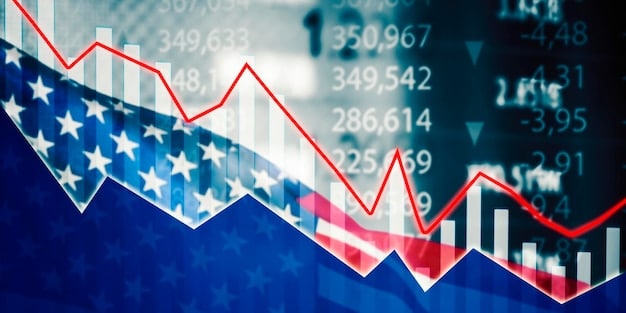
In conclusion, the Fed’s decision is a deliberate attempt to steer the economy towards a path of stable prices and sustainable growth, albeit with potential consequences for consumers.
Impact on Borrowing Costs for Consumers
One of the most direct impacts of the Federal Reserve’s rate hike is on borrowing costs for consumers. Increased interest rates translate to higher costs for various types of loans, influencing spending habits and financial planning.
Mortgages and Home Equity Loans
For prospective homebuyers, a rate hike means higher mortgage rates. This can significantly affect affordability, potentially reducing the number of people who can qualify for a mortgage. Existing homeowners with adjustable-rate mortgages (ARMs) may also see their monthly payments increase.
Credit Cards and Personal Loans
Credit card interest rates are typically variable, meaning they are closely tied to benchmark interest rates. As the Fed raises rates, credit card APRs are likely to follow suit, making it more expensive to carry a balance. Similarly, interest rates on personal loans and auto loans will likely increase, adding to the overall cost of borrowing.
- Mortgages: Higher rates decrease affordability for new buyers and increase payments for those with ARMs.
- Credit Cards: Increased APRs make carrying a balance more expensive.
- Personal Loans: Interest rates on new loans will likely rise.
Consumers should carefully evaluate their borrowing needs and consider paying down existing debt to mitigate the impact of rising interest rates. They might also explore options like balance transfers or debt consolidation to secure lower interest rates before they climb further.
Savings and Investment Implications
While higher interest rates can increase borrowing costs, they also have implications for savings and investments. Understanding these effects can help consumers make informed decisions about managing their assets.
Higher Savings Account Yields
The silver lining of a rate hike is that savings accounts and certificates of deposit (CDs) typically offer higher yields. Banks and other financial institutions increase their savings rates to attract deposits, providing consumers with an opportunity to earn more on their savings.
Impact on Investment Returns
The effect on investment returns is more complex. Rising interest rates can negatively impact bond prices, as newly issued bonds with higher yields become more attractive. Stocks can also be affected, as higher borrowing costs can reduce corporate profits. However, certain sectors, such as financials, may benefit from higher rates.
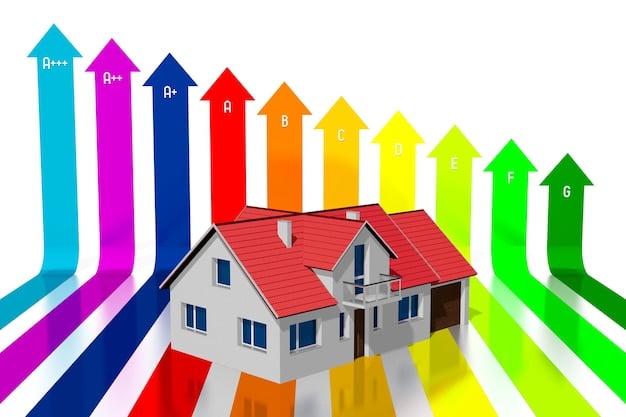
Diversification is key to navigating the investment landscape in a rising interest rate environment. Spreading investments across different asset classes can help mitigate risk and potentially capture opportunities.
In conclusion, while the initial pain point for consumers is the higher borrowing costs, investors who are savvy can make the most of the changed scenario with strategic allocations.
The Housing Market in 2025
The housing market is particularly sensitive to interest rate changes. The Federal Reserve’s decision to raise rates will likely have a significant impact on home sales, prices, and overall market dynamics in 2025.
Cooling Effect on Demand
Higher mortgage rates tend to cool down demand in the housing market. As borrowing becomes more expensive, fewer people can afford to buy homes, leading to a decrease in sales volume. This can result in a slowdown in price appreciation or even price declines in some markets.
Increased Inventory
As demand decreases, the inventory of homes for sale may increase. This gives buyers more options and potentially more bargaining power. However, sellers may need to adjust their expectations and be willing to negotiate on price to attract buyers.
- Reduced Demand: Higher rates make homeownership less affordable.
- Increased Inventory: More homes on the market give buyers more choices.
- Price Adjustments: Sellers may need to lower prices to attract buyers.
The housing market in 2025 will likely be characterized by a more balanced dynamic between buyers and sellers. Buyers should exercise caution, carefully assess affordability, and shop around for the best mortgage rates. Sellers should be realistic about pricing and be prepared to negotiate.
Strategies for Consumers to Adapt
In light of the interest rate hike, there are several strategies consumers can employ to adapt and protect their financial well-being. Proactive measures can help mitigate the negative impacts and capitalize on potential opportunities.
Debt Management
One of the most important steps is to manage debt effectively. Prioritize paying down high-interest debt, such as credit card balances, to reduce the overall cost of borrowing. Consider consolidating debt or transferring balances to lower-interest cards.
Budgeting and Savings
Review your budget and identify areas where you can cut back on spending. Increase your savings rate to take advantage of higher yields on savings accounts and CDs. Building an emergency fund can provide a cushion to weather unexpected expenses.
Consumers should adopt a proactive approach to managing their finances. This includes carefully evaluating borrowing needs, exploring opportunities to save and invest, and making informed decisions about major purchases.
Expert Opinions and Economic Forecasts
To gain a more comprehensive understanding of the implications of the 0.25% interest rate hike, it’s helpful to consider expert opinions and economic forecasts. These insights can provide valuable context and perspective.
Economist Perspectives
Economists generally agree that the rate hike is a necessary step to combat inflation. However, there are varying opinions on the potential impact on economic growth. Some economists believe that the rate hike will be sufficient to bring inflation under control without causing a recession, while others are more concerned about the risks of a downturn.
Financial Analyst Insights
Financial analysts are closely monitoring the impact of the rate hike on various sectors of the economy. They are particularly focused on the housing market, consumer spending, and corporate earnings. Their insights can help investors make informed decisions about asset allocation and risk management.
In conclusion, while the path ahead remains uncertain, consumers can prepare themselves by staying informed, seeking professional advice, and taking proactive steps to manage their finances.
Long-Term Economic Outlook
Looking beyond the immediate impact of the Federal Reserve rate hike, it’s essential to consider the long-term economic outlook. Understanding the potential trajectory of interest rates, inflation, and economic growth can help consumers make informed decisions about saving, investing, and financial planning.
Future Interest Rate Movements
The Fed has signaled that further rate hikes may be necessary to achieve its inflation target. The pace and magnitude of these increases will depend on the evolution of economic data, including inflation, employment, and GDP growth. Monitoring these indicators will provide clues about the Fed’s future policy decisions.
Potential Scenarios for 2025 and Beyond
Several potential scenarios could unfold in the coming years. One scenario is a “soft landing,” in which the Fed successfully brings inflation under control without triggering a recession. Another scenario is a recession, in which the economy contracts due to higher interest rates and reduced demand.
- Soft Landing: The Fed curbs inflation without causing a recession.
- Recession: Higher rates lead to economic contraction.
- Stagflation: High inflation persists despite slow economic growth.
Consumers should prepare for a range of potential outcomes by maintaining a diversified investment portfolio, managing debt prudently, and building an emergency fund.
| Key Point | Brief Description |
|---|---|
| 🏠 Mortgage Rates Rise | Buying homes becomes more expensive, cooling demand. |
| 💳 Credit Card APRs Increase | Carrying a balance on credit cards gets pricier. |
| 💰 Savings Yields Improve | Savings accounts and CDs offer better returns. |
| 📈 Investment Impacts | Diversification is key to managing risks and opportunities. |
Frequently Asked Questions
▼
The Federal Reserve raised interest rates to combat inflation, aiming to reduce consumer spending and cool down the economy to stabilize prices.
▼
New homebuyers will face higher mortgage rates, while those with adjustable-rate mortgages may see their monthly payments increase as rates adjust.
▼
Yes, savings accounts and certificates of deposit (CDs) typically offer higher yields as banks increase rates to attract more deposits after a Fed rate hike.
▼
Prioritize paying down high-interest debt, consolidate debts, or transfer balances to lower-interest cards to reduce the overall cost of borrowing effectively.
▼
The stock market may experience volatility, but certain sectors like financials could benefit. Diversification helps manage potential risks in investment returns during this time.
Conclusion
The Federal Reserve’s 0.25% interest rate hike presents both challenges and opportunities for US consumers in 2025. By understanding the implications for borrowing costs, savings, and investments, consumers can take proactive steps to manage their finances effectively and navigate the evolving economic landscape.

